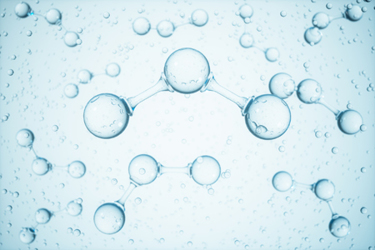Water Scarcity, Treatment Needs Giving Rise To Ozone Generator Market Demand
By Vijay Ovhal

Water is an essential resource crucial to supporting the foundation of all lives on earth. However, the availability of fresh water in relatively small amounts has posed numerous challenges as it is critical to fulfil basic individual, agricultural, and environmental requirements.
- Nearly 2.7 billion suffer water scarcity for at least one month annually, while an estimated 1.1 billion people globally lack access to water.
- 2.4 billion people, due to lack of proper sanitation, are exposed to illnesses such as typhoid fever, cholera, and other waterborne diseases.
- 2 million people, predominantly children, die from diarrheal diseases each year.
Daunting estimates regarding water scarcity worldwide have put forth an urgent requirement to introduce efficient wastewater technologies and treatment solutions. One of those is using ozone in water treatment and purification facilities to oxidize water and eliminate contaminants, such as viruses, bacteria, and metals.
The key reason why ozone injection is considered an effective way to treat and purify water is, unlike chlorine, it leaves no toxic byproducts in the environment or the water. Studies claim that ozone purifies water 3,000 times faster than chlorine. Its increasing availability as one of the strongest and fastest commercially available disinfectants and oxidants for water treatment will redefine ozone generator market trends over the forthcoming years.
Wastewater treatment creating ample growth prospects for the ozone generator market
- 44% of household wastewater worldwide is not safely treated.
With the consistent growth in global population, rapid urbanization, economic development, and degradation of natural environments, ensuring everyone has access to safe and sufficient water supplies is becoming increasingly challenging.
As per UN Habitat statistics
- The share of the population living in cities globally recorded a two-fold growth, reaching around 50% in 2020 from 25% in 1950.
- The number of cities in low-income and high-income economies will increase by 76% and 20% between 2020 and 2070.
These overwhelming scenarios shed light on the fact that wastewater pollution remains among the biggest challenges the world is facing today and how this polluted and untreated water poses a severe hazard to human health and the ecosystem alike. A major part of the solution lies in reducing pollution levels and improving the way wastewater is managed.
To that end, several global policymakers have been taking necessary initiatives and undertaking numerous projects focused on mitigating water scarcity and adequately managing wastewater. For instance, through the Global Wastewater Initiative, the United Nations Environmental Programme (UNEP) has been collaborating with governments, stakeholders, and partners to ensure sustainable wastewater management and sanitation provision worldwide.
R&D and innovations to redefine ozone generator market dynamics
While ozone generator manufacturers promote it as an effective method to clean odors and indoor air pollution, ozone is associated with adverse health effects. Available scientific proof indicates that ozone concentrations that are safe to breathe are far-fetched to be effective in preventing indoor air pollution. Such evidence can hamper the product sales trajectory during the projection period.
In contrast, in August 2020, researchers at Fujita Health University claimed that low concentration of ozone (0.05 to 0.1 ppm) can neutralize coronavirus particles and is harmless to humans. This potentially helped hospitals disinfect examination rooms and waiting areas, further fostering the demand for ozone generators.
That being said, major companies operating in this business have been leveraging advanced technologies and rolling out new products. The strategy is expected to help them gain a strong foothold and remain competitive in the ozone generator market.
For instance, in March 2021, Suez Water Technologies & Solutions presented the Ozonia L, its latest range of large-capacity ozone generators. The product line, with a compact footprint, delivers large-scale ozone production, real-time system optimization, and a new web-enabled interface.
With these optimistic scenarios and strict government regulations regarding wastewater management across several economies, the ozone generator market is set to witness remarkable growth in the foreseeable future.
Source: https://www.gminsights.com/industry-analysis/ozone-generator-marke
